Module 3.3.
In most areas of employment, a need is identified, management agree that staffing for that gap is important, and someone qualified (hopefully) is employed to meet that need. Their job description is clear, they fit into an established staffing structure, they have a clear product to produce, and they understand the markers against which their job performance is evaluated. That is to say, ideally everyone in the business or department knows what that person does, the work they produce, who they answer to and the value they add.
Not so the teacher librarian (TL). The role is an old one that has carried through to the present and people are struggling to remember why it was created in the first place when the present looks so very different. It’s not even that teacher librarians have failed to make themselves relevant; rather, assumptions about librarians as “the stereotypical school marm librarian, shushing students and checking out books, oblivious to what’s happening in education and the politics that drive major educational priorities and funding” (Kachel, 2017, para.2) persist. This stereotype popped up in more than one article in Module 3 (Kachel, 2017; Kuon, 2012; Lupton, 2016), and it completely resonated. It felt familiar, because I have absorbed it too: A stern older woman wearing glasses and a “twin-set” (Lupton, 2016), who spends all her time amongst dusty books, glaring at students who start whispering to each other, and is completely unapproachable. When you think about the typical age of school principals, this may well have been the librarian they remember from their childhood: the dragon. Our biases (ingrained assumptions which influence our decisions and opinions) are often invisible to us but may result in teacher librarians being marginalised, overlooked and considered irrelevant. The good news is that TLs can do something about it.
A 2011 Australian Government inquiry found that the TL “was seen as a poor performing teacher who had been placed in the Library to remove them from the classroom” and that they were stereotyped as the “dragon in pearls who guards books” (Lupton, 2016, p.49). In a 2016 study of principals’ perceptions of teacher librarians in Queensland, it becomes clear that even principals aren’t always sure what the role of the TL is (Lupton, 2016, p.52), or their value to the school, especially in improving student achievement (Lupton, 2016, p.53).
A 2013 survey of teacher librarians’ contribution to student literacy development in Gold Coast schools reported a mostly positive perception of principals on the role of the TL (Hughes, 2013, p.41). Principals could see that ‘literacy’ had evolved into something multi-faceted and that TLs can work not only with students but other teachers as well (Hughes, 2013, p. 45). 93% of principals in the survey considered the school library to be “necessary” and a positive influence on student literacy development (Hughes, 2013, p.48) – the results were higher for non-government schools, which typically invest more in their libraries and TLs. Hughes notes that six of the government schools in the survey did not have a TL (Hughes, 2013, p.48). The principals recognised a need for more funding, in particular for support staff and technological resources.
So it seems that, while the myth of the librarian-as-dragon persists, many principals do see value in their teacher librarians – though “the contextualised nature of the role points to one of the problems with the profession, that it is that the value of the teacher-librarian as an individual seemed to outweigh the value of the role per se.” (Lupton, 2016, p.57) While this is a bit concerning it’s hardly surprising: teaching is a personalised, stylistic profession and there are no definitive ‘answers’ or ways of doing things (it’s an established understanding at my school that you can’t teach someone else’s lesson: we each have our own style of teaching and the thought-processes behind it are very individual).
Ultimately, principals value five ‘themes’ in their teacher librarians, according to Lupton’s survey:
- TLs provide value-for-money, as they are teachers first, librarians second;
- TLs provide a broad perspective because of their management, whole-school/holistic position;
- TLs can give valuable advice and provide ideas to other staff;
- TLs provide leadership in ICT; and
- the qualities of teacher-librarians – their skill set and professional disposition – are valued (Lupton, 2016, p.52)
Earlier, Hughes’ (2013) survey of Gold Coast principals found that TLs were perceived as effective contributors to student literacy development (pp.43-4); managers and leaders in literacy (p.45); and flexible and collaborative (p.46).
But perception is key to the survival of the teacher librarian because so much of their work is done in the ‘wings’, rather than centre stage. Haycock (2007) believes that collaboration with other staff is vital, and this is echoed across other articles. Todd (2012) notes that for the school library to be recognised and appreciated as “a pedagogical centre” (p.30) , TLs need to see themselves as co-teachers (p.31) – echoing Lupton (2016) who found that principals valued TLs as teachers first. Because they are managers of school libraries, TLs must therefore collaborate with other teaching staff. The difficulty with this is less about time (Haycock, 2007, p.31) and more about other “teachers’ attitudes prevent[ing] instructional collaboration” (Haycock, 2007, p.31). To overcome any issues with finding the time to collaborate, the best results were found when there was flexible scheduling (Haycock, 2007, p.31). More importantly, issues with normalising collaboration – as an expected part of the profession – comes down to the support of the principal.
It feels like a cycle: to be valued by the principal, TLs need to collaborate with other staff. In order to collaborate with other staff, principal support is probably needed. However, becoming valuable to the principal starts even earlier, and because it’s just one person (as opposed to many teachers), it’s a much less daunting prospect.
Mark Ray (2013) identifies several key things that TLs can do to ensure a strong, mutually-beneficial relationship with the school principal:
- Seek out win-win opportunities (use the library to help the school meet its ‘vision’).
- Give before you receive (find out what your principal needs, then help them).
- Bridge the gap (collaborate).
- Identify successes (share the positive things you see in the classroom that teachers and other staff are doing)
This is a clear strategy involving the occasional conversation with a busy principal who may feel that the TL is unnecessary window-dressing at the start, but who will come to see you as indispensable. I’m tempted to use a Holmes-and-Watson analogy but it doesn’t quite fit.
Likewise, Debra Kachel (2017) has a similar strategy for increasing your influence with the principal, which boils down to two, very doable points:
- Research what your principal cares about (this is similar to Ray’s first point), whether it’s a ‘hidden agenda’ or clearly stated on the school website. Kachel also suggests getting to know the principal’s interests and background, as a way to make a connection
- Change the conversation: “instead of telling the principal what’s happening, ask the principal what he or she wants to happen” (p.51) – this is akin to Ray’s second point (above). The point of this is to make the school library an integral part of the school mission at all levels. Which makes a great deal of sense.
In 2011 Karen Bonanno presented a ‘five fingered plan’ for ensuring that Teacher Librarians are recognised and valued by the whole school community. The ‘five fingers’ consist of:
- Thumb: strength of character (establish pre-eminence, an online presence, bring expertise)
- Pointer finger: F.O.C.U.S. (follow one course until sucsessful: have a goal, assess outcomes – don’t take on too many goals all at once)
- Middle finger: brand (what you, the TL, stand for; involves all ‘fingers’)
- Ring finger: relationships (circle of influence. Focus on working with those people who want to work with you)
- Little finger: the little things that count (your ‘elevator pitch’: what you do that others don’t but make it about them, not you – this makes you indispensable to other educators and the principal, rather than sounding like you only care about your own interests which may not align with the school’s).
Overall, it comes down to the teacher librarian as a professional educator with a broad set of skills whose role encompasses the school as a whole: all staff, students, community stakeholders; and multiple facets: information literacy, information management, leader, collaborator, resourceful. Ultimately, the role must fit the school: you the TL must fit the school environment, but also bring about positive change. You can help shape it in beautiful ways, precisely because you’re across the whole environment.
References
Bonanno, K. (2011). A profession at the tipping point: Time to change the game plan. Australian School Library Association conference, Vimeo, https://vimeo.com/31003940.
Haycock, K. (2007). Collaboration: Critical success factors for student learning. School Libraries Worldwide, 13(1), 25-35.
Hughes, H. (2013). Findings about Gold Coast Principal’s views of school libraries and teacher librarians. Chapter 8, School libraries, teacher librarians and their contribution to student literacy development in Gold Coast schools. Research report.
Kachel, D. (2017). The principal and the librarian: positioning the school library program. Teacher Librarian 45(1). Pages 50-52.
Kuon, T., Weimar, H. (2012, September). How does your boss see you? School Library Journal, 58(9), 36.
Lupton, M. (2016, January). Adding value: principal’s perceptions of the role of the teacher-librarian. School Libraries Worldwide, 22(1). Pages 49-61. https://doi-org.ezproxy.csu.edu.au/10.14265.22.1.005
Ray, M. (2013, January 31). Making the principal connection. School Library Journal. https://www.slj.com/?detailStory=the-same-difference-mark-ray-asserts-that-principals-and-librarians-have-a-lot-more-in-common-than-you-might-think-and-he-should-know
Todd, R. J. (2012). School libraries as pedagogical centers. SCAN, 3(3), 27-36.

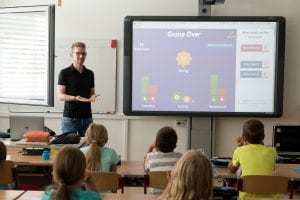
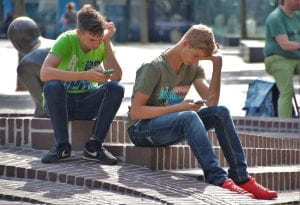
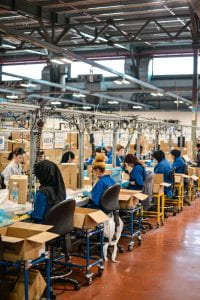
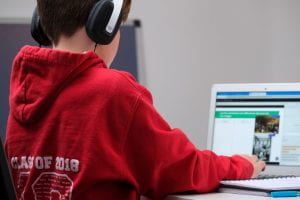






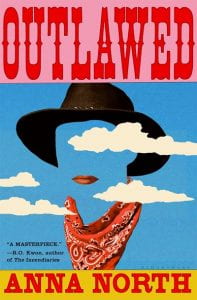














Recent Comments
shannon.badcock
"Yes I wondered/worried about that. I find it hard to separate it from ..."
ederouet
"What a great looking blog! I love your widgets and use of categories ..."